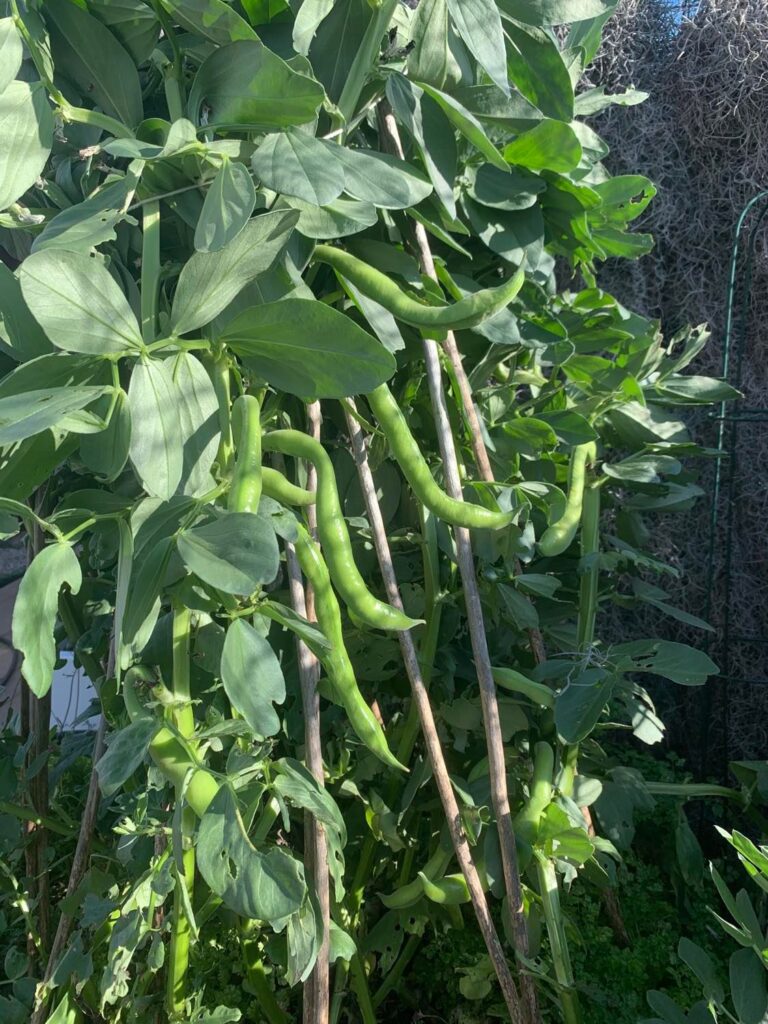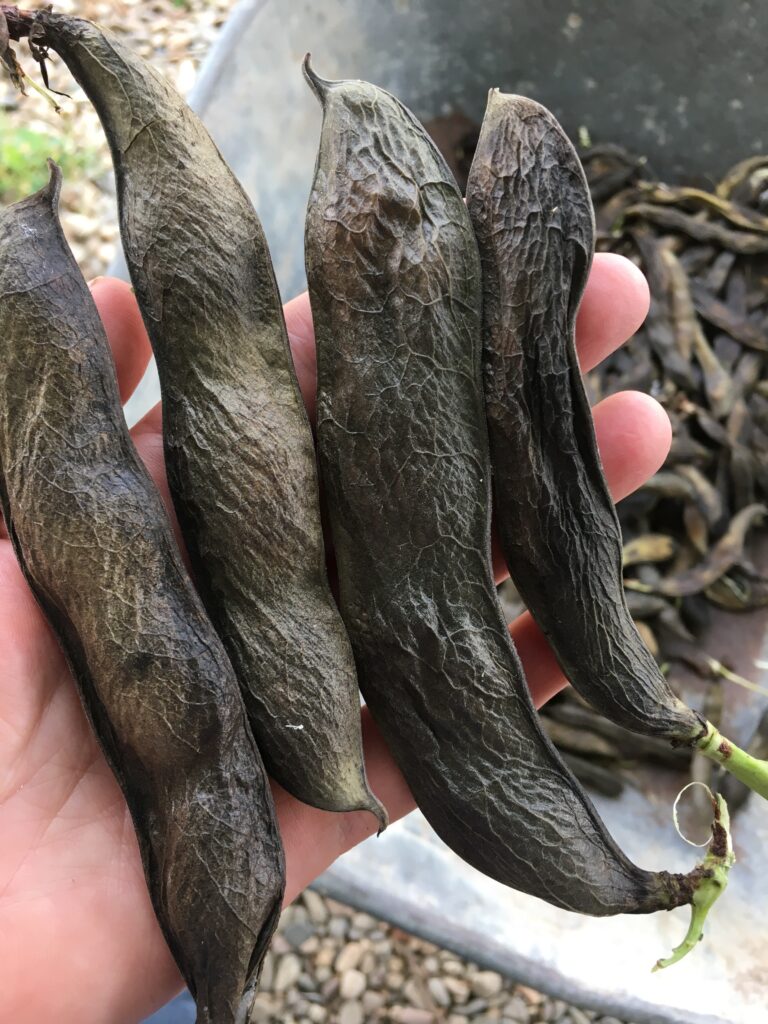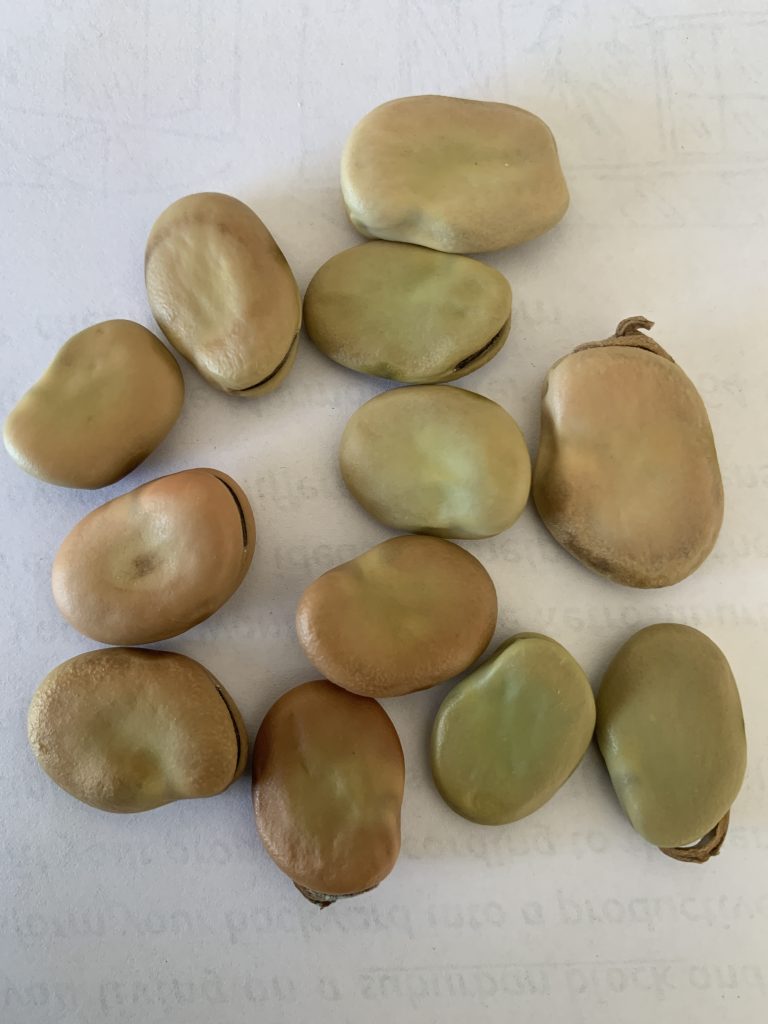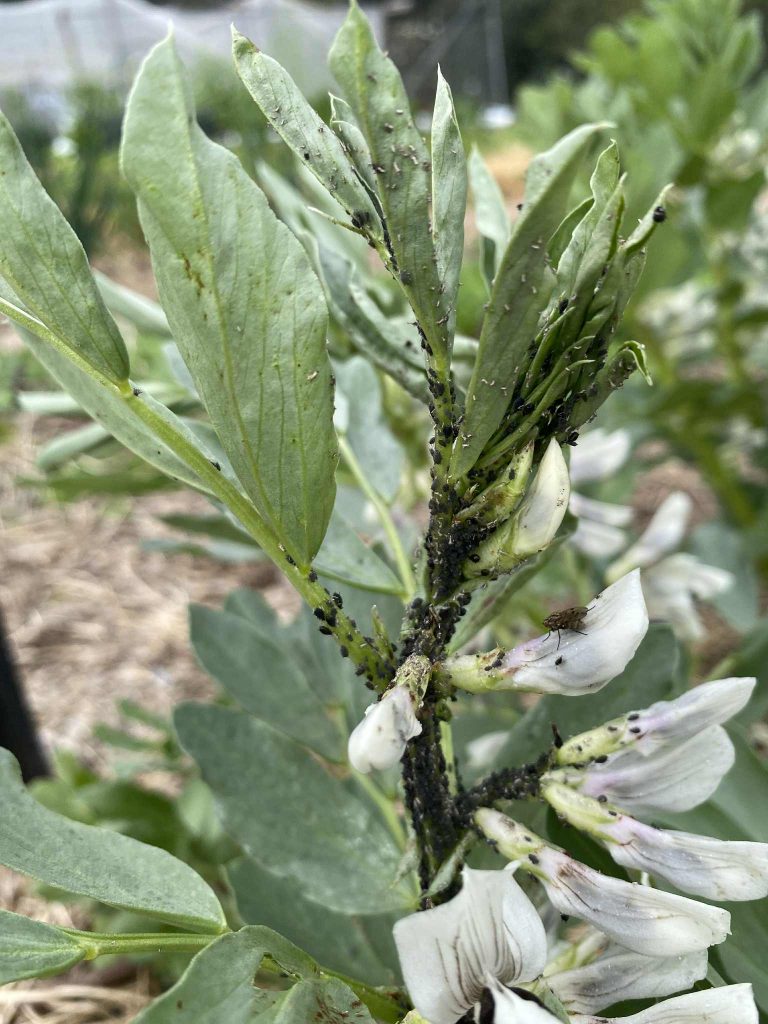Botanical name : Vicia faba
Common name : Broad Bean, Field bean, Horse bean, Faba or Fava Bean, Tic Bean
Intermediate difficulty for seed saving
Lifecycle: Annual
Pollination: Self-pollinating with some percentage usually insect pollinated
Mating system: perfect flowers
Suggested spacing: Same as for eating production
Seed specific requirements: Flowers are damaged at temperatures below -2 C and above 35 C, so seed set at these temperatures is impacted.
Isolation distance: 150 metres
Population size: 10 to 20 plants
Seed maturity: Pods are harvested when they turn black and lose their sponginess
Processing method: Thresh or break the pods to remove the seeds
Expected seed viability: 3 years
Images



Cultivation
Broad Beans prefer temperatures between 15 and 25 C. In Southern Australia they will happily grow through winter in most locations. Temperatures below -10 C may damage or kill them depending on the variety. Flowers are affected by very low and high temperatures. They are less likely to set pods when temperatures are below 10 C or above 35 C. There will not be any pod set below -2 C for most garden varieties. There is some variation in temperature range between varieties. When hit by frost broad beans tend to temporarily wilt a bit and then stand back up as the day warms up. More mature plants that are hit by frost are less likely to be able to stand back up fully and taller plants often end up with a hockey stick bend in their stems.
The timing of sowings will have the largest impact on the timing of the crop setting pods. Daylength can also have an impact (more in some varieties than others). Seeds planted too early risk low pod set because of low temperatures and higher risk of lodging as they become top heavy as the pods will all be at the top of the plant. Seeds planted too late risk flowering during high temperatures and water stress which also reduces pod set.
Late planted seed will produce shorter plants. Plants that grow through colder winters are more likely to branch into a multi-stemmed bush.
Late frosts on pods that have set can cause damage to the pods and also mark the seeds inside the pods.
In the Far South Coast, NSW, broad beans are best planted in May. They have the chance to produce strong growth over winter with flowering starting in August/September when the risk of severe frosts damaging plants or flowers is less. There is also reasonable time to mature the crop before temperatures can too hot.
Growing for seed
Seed should be sown early enough that the crop will flower and set enough pods before the temperature reaches 35 C.
As Broad Beans are able to be cross pollinated by insects they should be isolated from other varieties by at least 150 m. Since they have perfect flowers and are capable of pollinating themselves they can also be caged to exclude pollinating insects such as bees. In this case the crop may be somewhat smaller. Insects may account for between 5% and 30% of the pollination of a broad bean crop. Physically shaking to trigger pollination within the flowers may help increase yields if pollinators are not used.
Selection
As usual, any plants that do not meet the expected characteristics of that variety. Things to consider include flower colour, pod size and disease resistance.
Diseases & Pests
The main issue with broad beans is usually aphids. They can be controlled by spraying with horticultural soap spray, which is available from numerous brands including ones with organic certification. Horticultural soap has less impact on beneficial insects. Be aware that home-made soap sprays can cause leaf burn from excess sodium. Horticultural soaps are made with potassium hydroxide rather than the sodium hydroxide used in household soaps, so do not have this side-effect.

Planting them far enough apart to allow reasonable airflow will also help to reduce potential fungal diseases.
Harvest
Pods are ready to harvest for seed when they go black and lose their sponginess. The pods at the bottom of the stalk will mature first. Those lower pods will produce the best and biggest seeds.
The home grower with smaller numbers of plants can hand-pick pods as they turn black. Larger crops can be harvested by cutting each stalk and laying them out to dry. The stems should be harvested before the top most pods are mature so as not to lose the best seed at the bottom. Check the bottom pods regularly, if they are starting to shatter in the garden it is time to harvest. If possible do it early in the day or on a cloudy, humid day so that the older pods do not shatter while the stalks are being cut.
Processing
Smaller quantities can be hand shelled. Larger quantities and whole stalks are more efficiently threshed by walking on or beating the seed material. It must all be quite dry and seeds hard enough before this is done or there is a risk of damage to the seeds.
Other Resources
- Favism is a lifelong genetic condition that can be triggered by eating broad beans. More information is available here https://www.healthdirect.gov.au/G6PD-deficiency
Contributors
Liz Worth, Nellie Pryke
